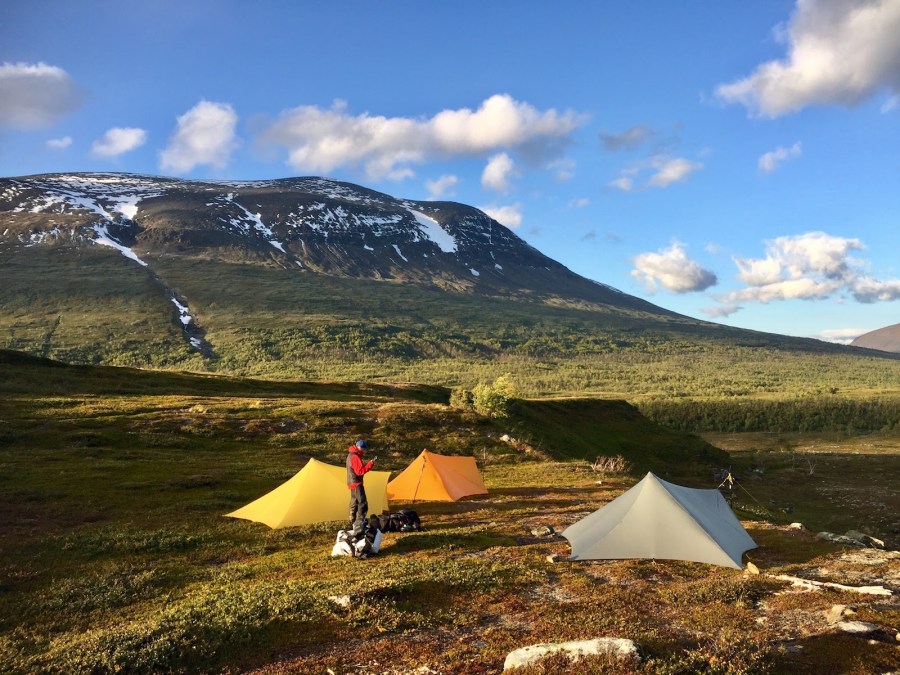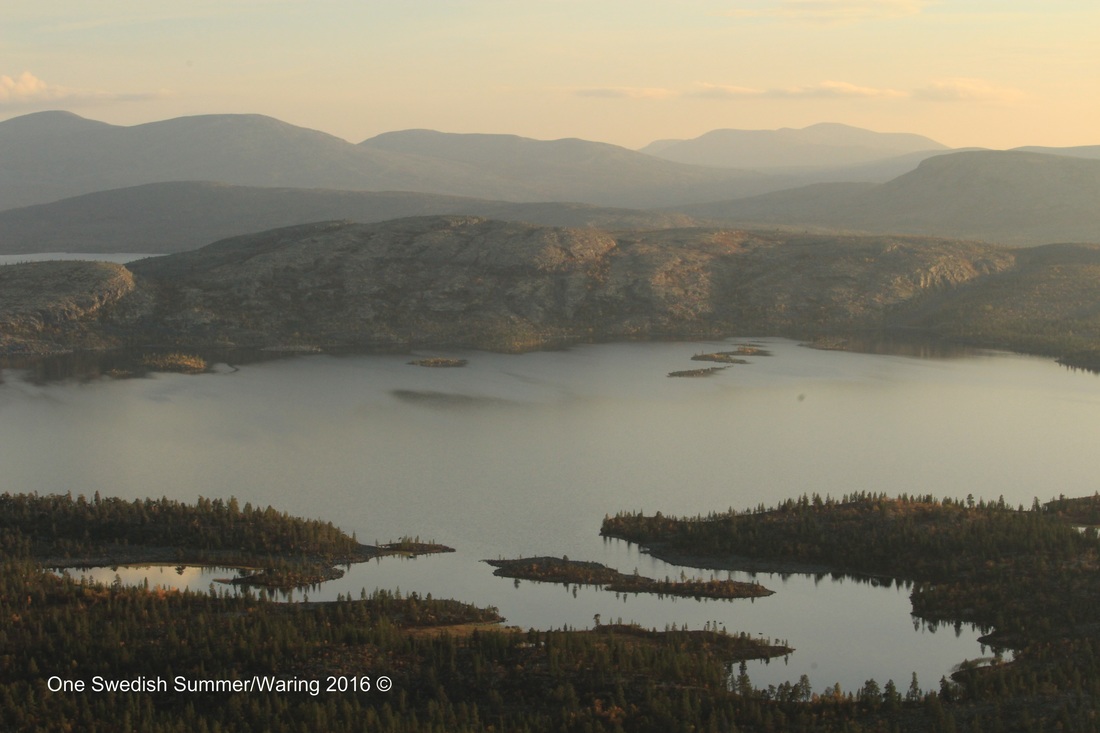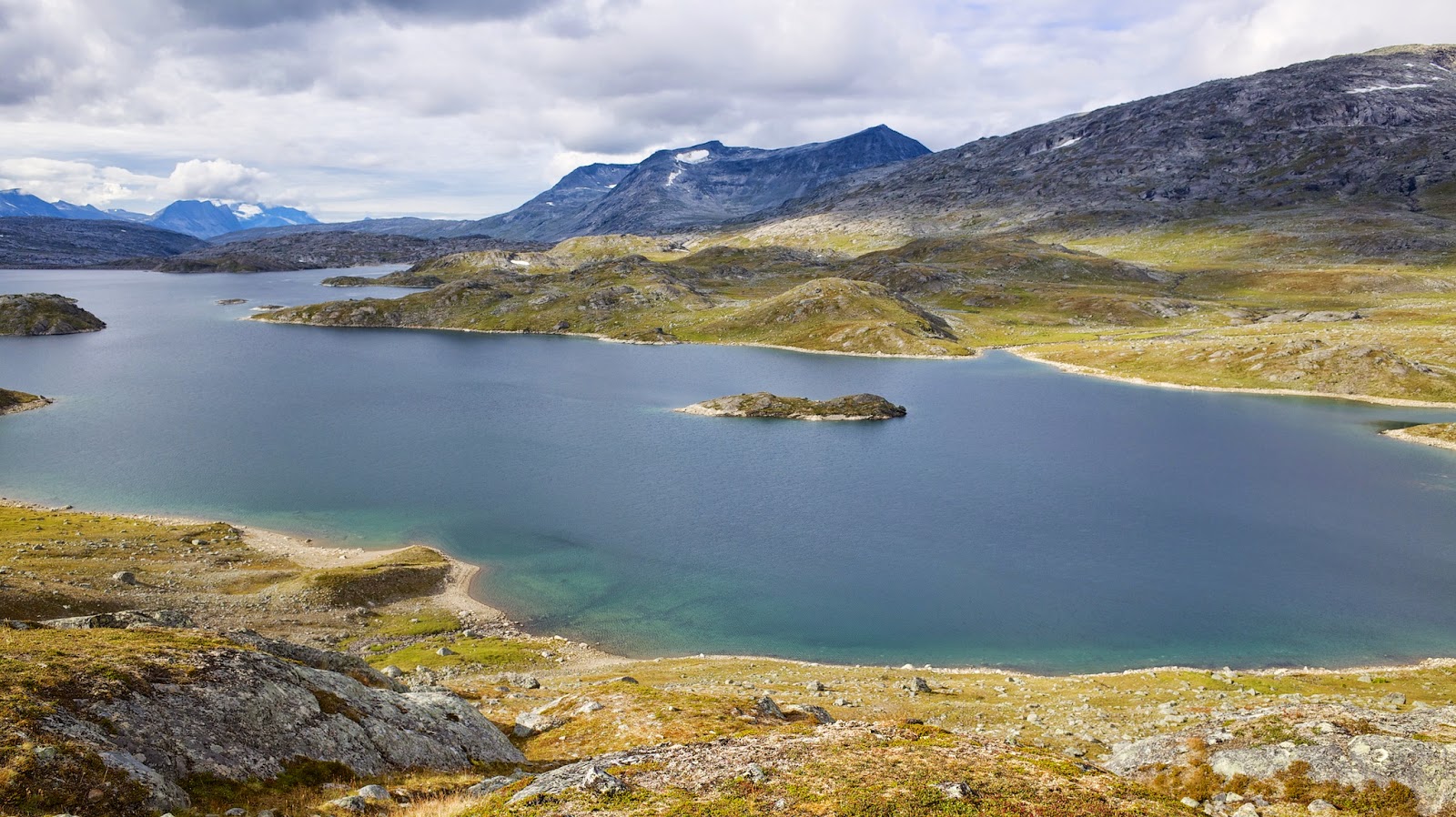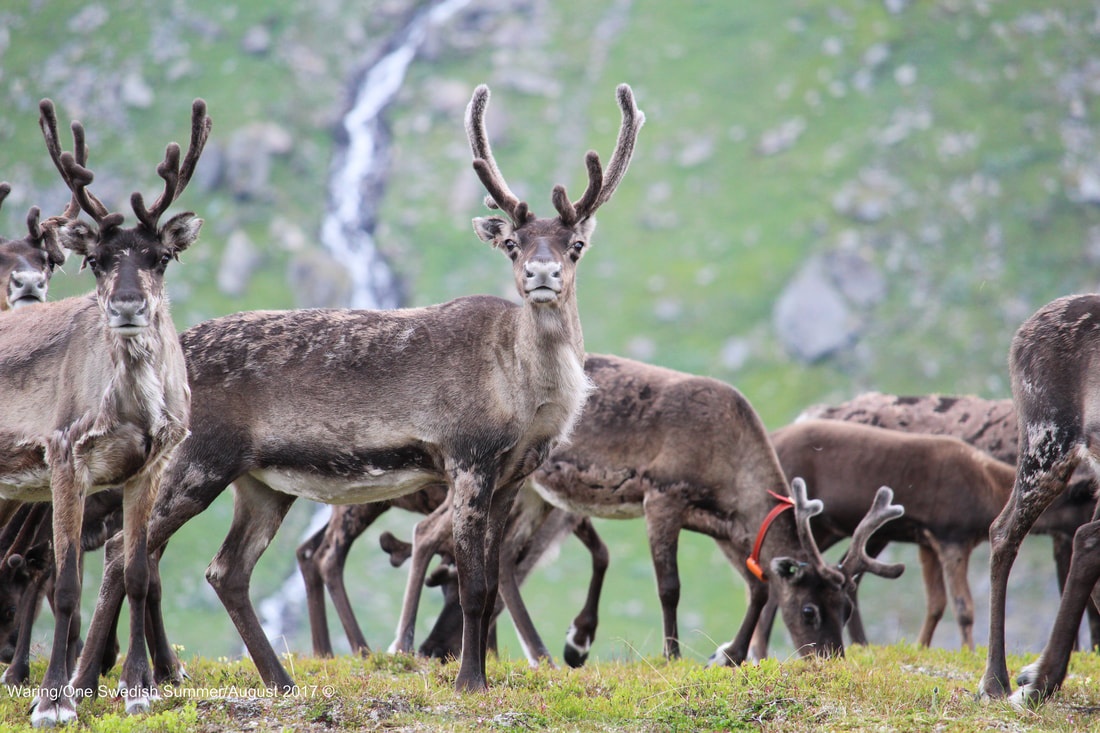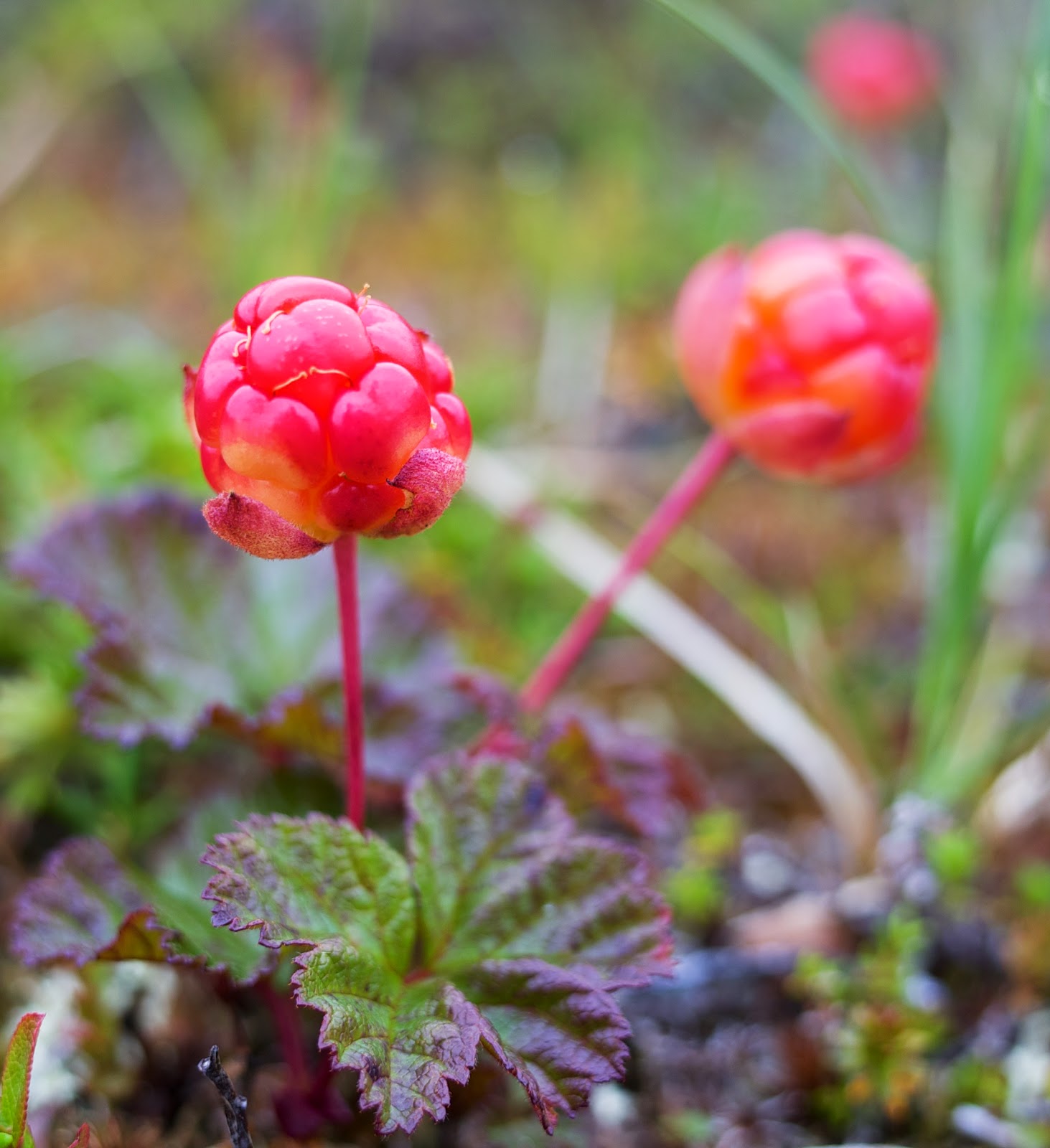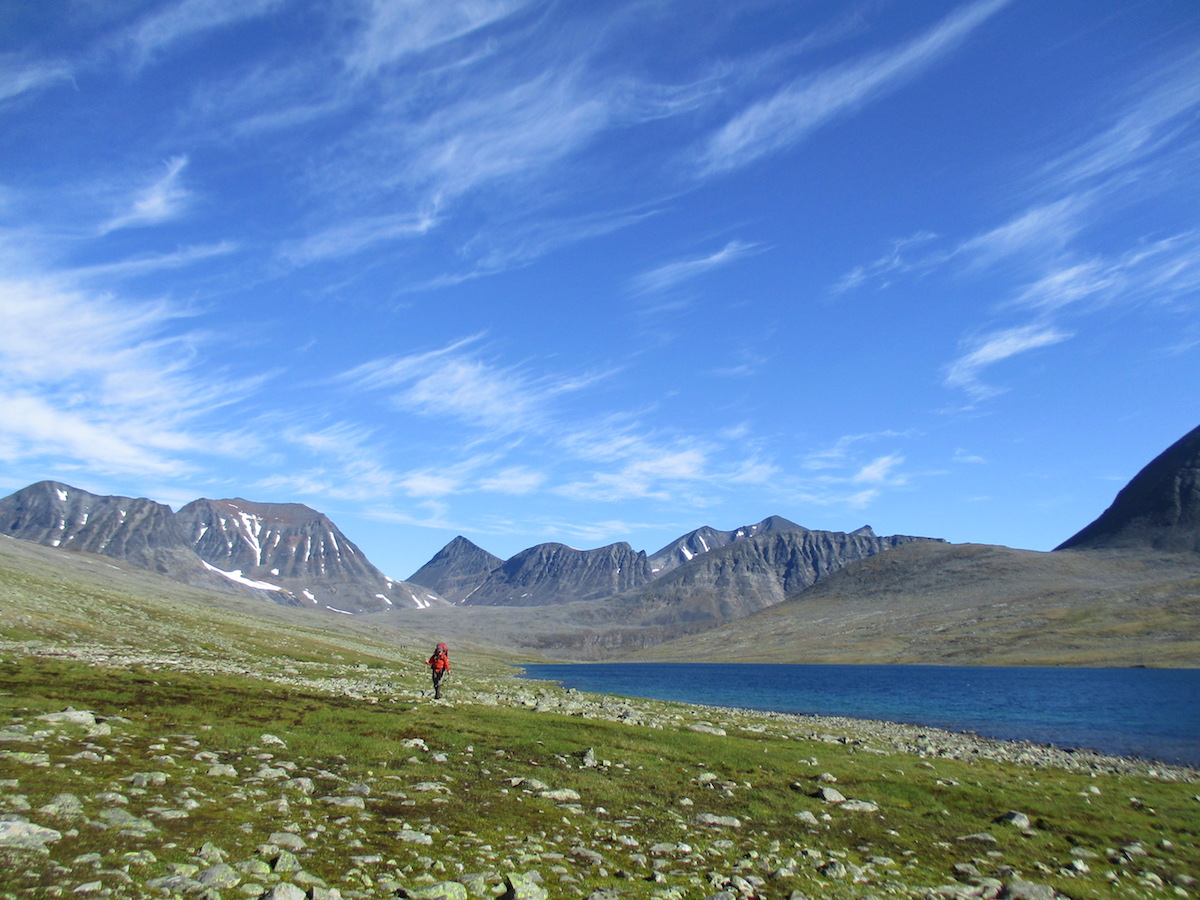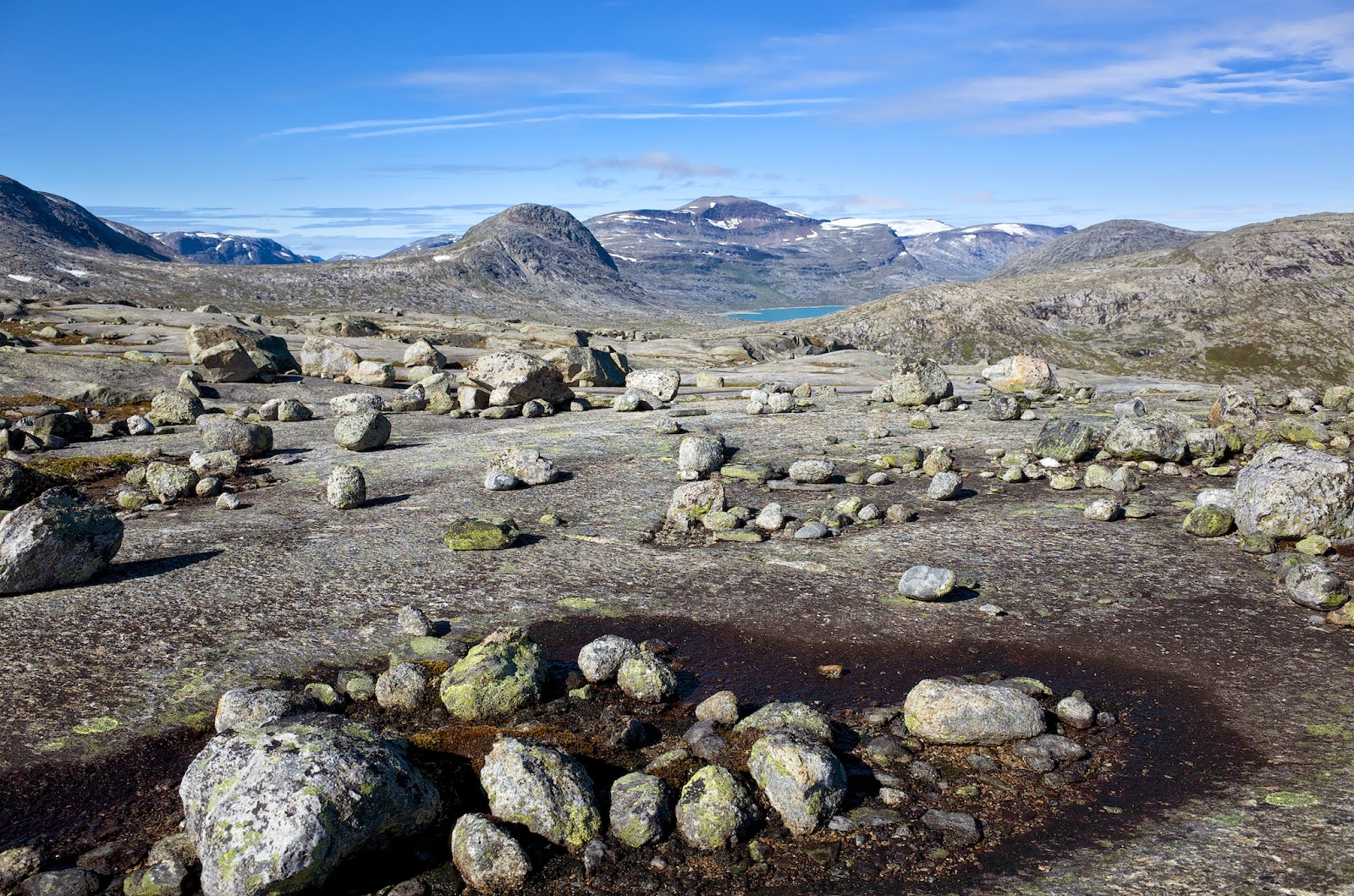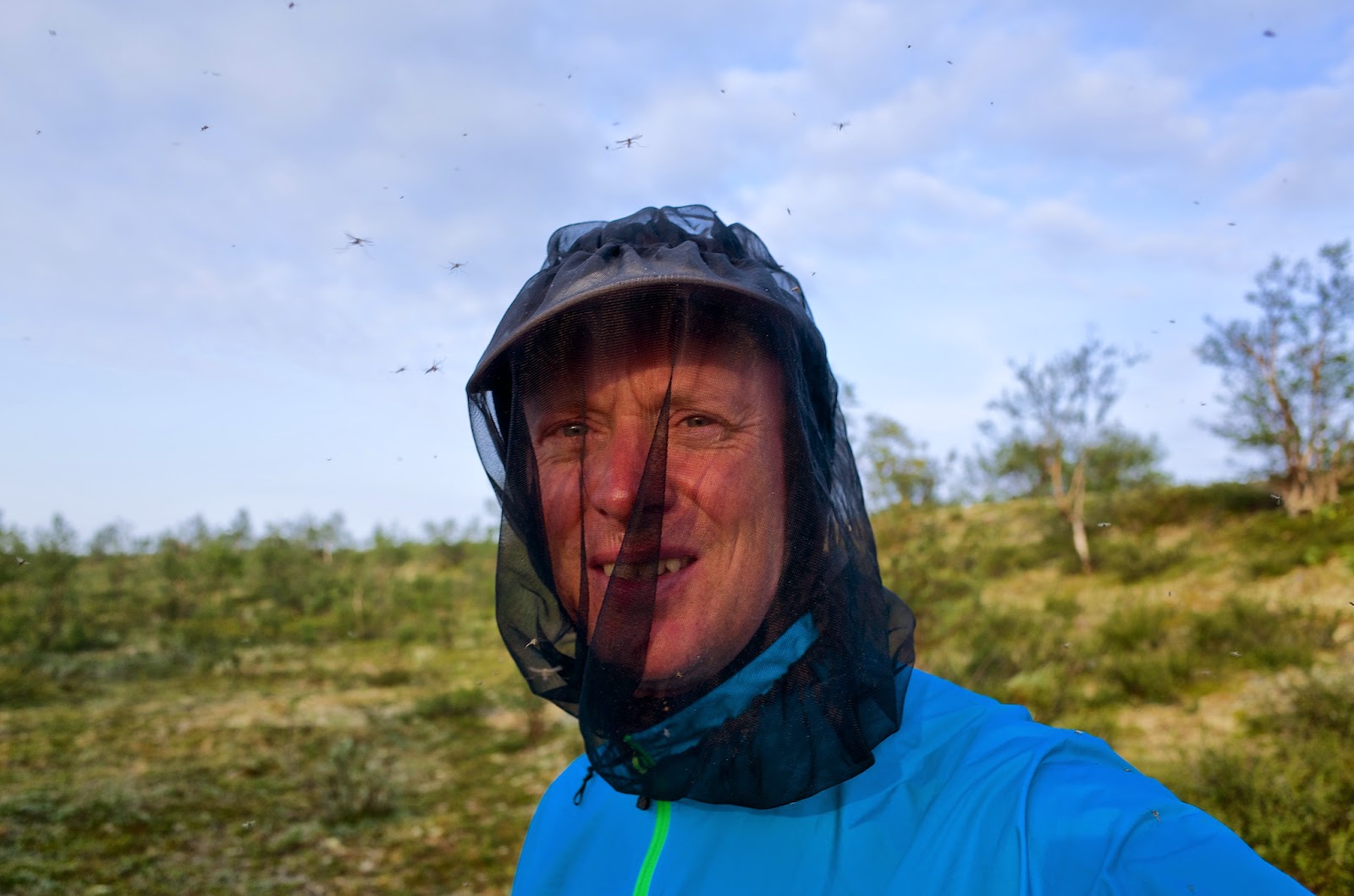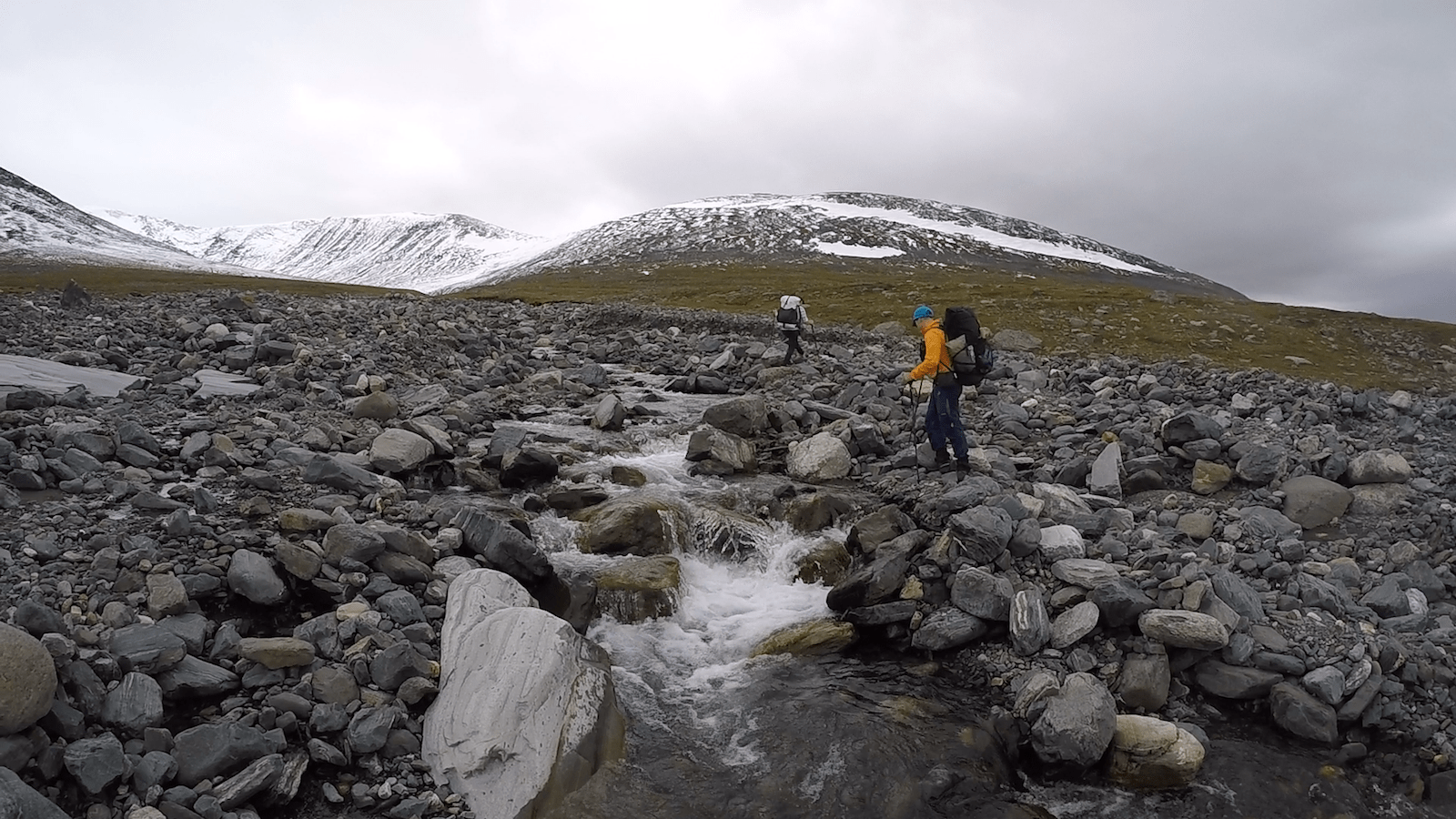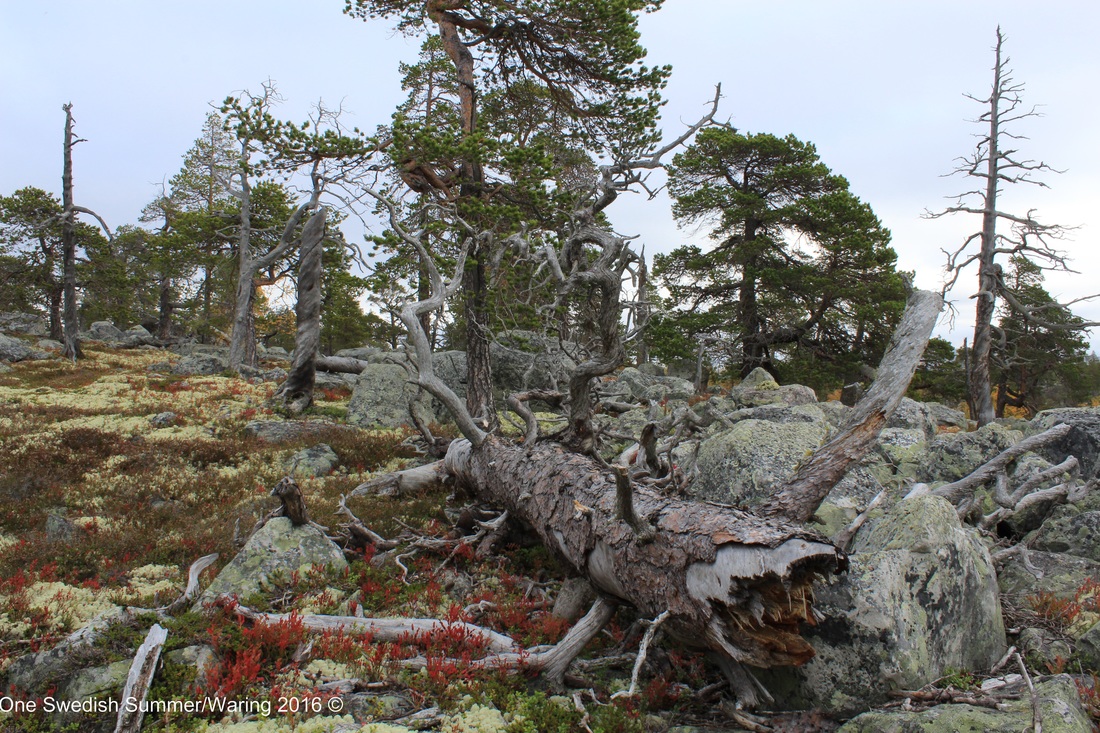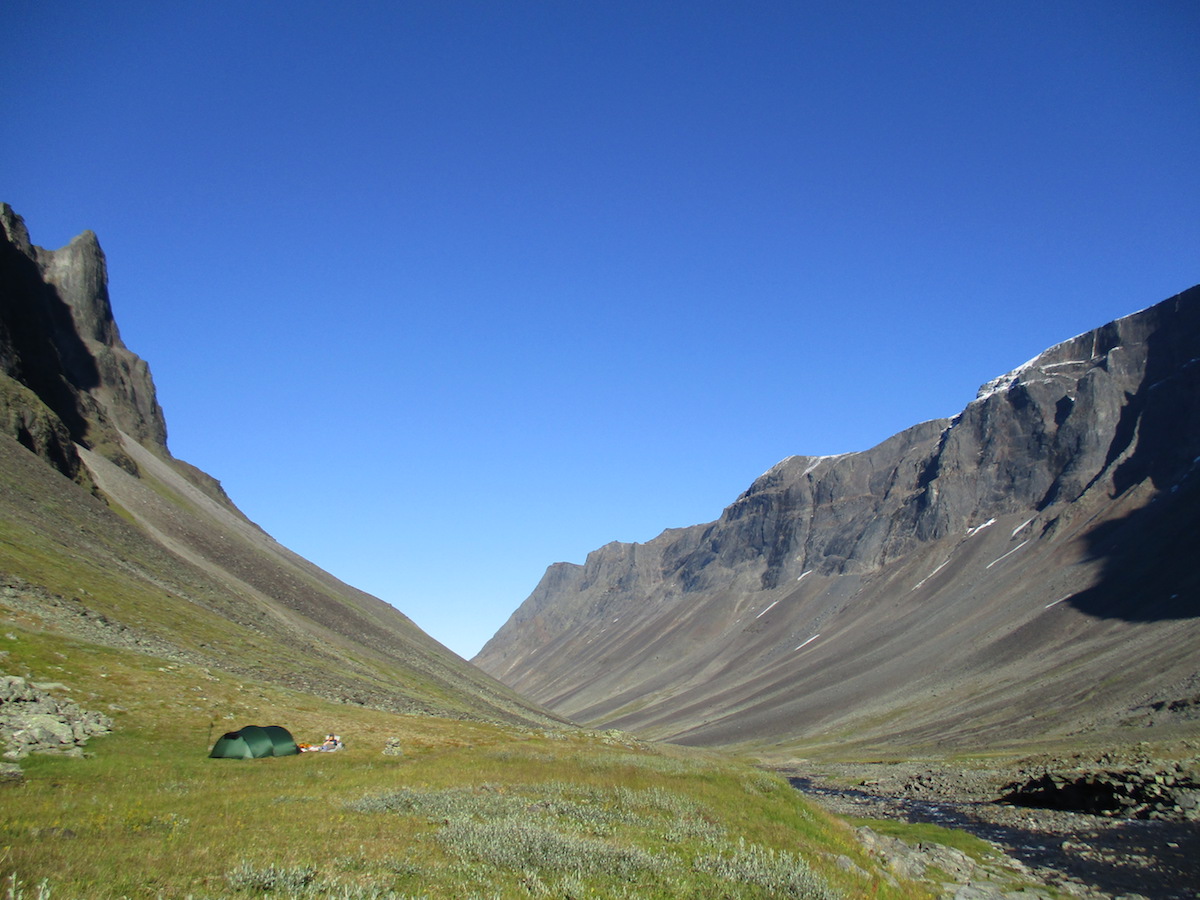Alex Roddie investigates the wilder charms of backpacking in the Scandinavian wilderness – and why you should consider it for your next big trip
The Scottish Highlands have long been a Mecca for British long-distance backpackers. From the Cape Wrath Trail to the TGO Challenge, this magazine has told the stories of these big journeys for decades, and it’s fair to say that a good proportion of our readers love nothing better than a multi-day stomp in the Scottish hills.
But over the last few years, more and more British backpackers have answered Scandinavia’s wilder call. There are plenty of reasons why a Scandinavian adventure should be high on your wishlist.
Meet the hikers
To build up a picture of why British backpackers are heading to Scandinavia, I chatted with a few who have made recent trips. Although their level of experience varies, all have completed ambitious, self-powered journeys – just the kind of thing that gets a TGO reader’s blood pumping!
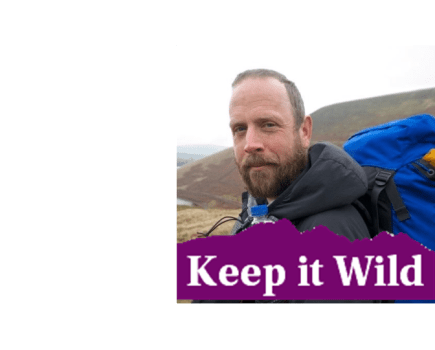
James Boulter
James Boulter is a well-travelled backpacker with trips such as the Colorado Trail and TGO Challenge under his belt. He’s made several journeys to Norway and Sweden, and this year hiked a 190km section of the Nordkalottleden trail – “one of the toughest hikes that I have done”. Read his trip reports here and here.
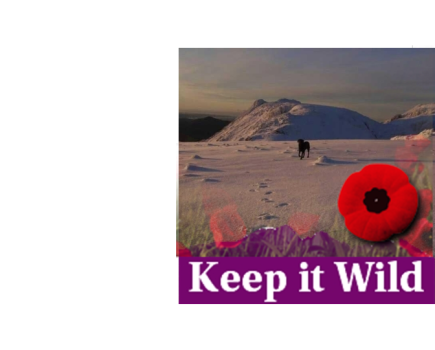
Peter Dixon
Peter Dixon regularly goes backpacking in the Lakes, and is a compleater of the Munros. He made just first visit to Scandinavia this year with friends Lee and Matt, hiking south from Abisko on a route they planned themselves, and were treated to spectacular displays of aurora. Watch his video report from the trip here.
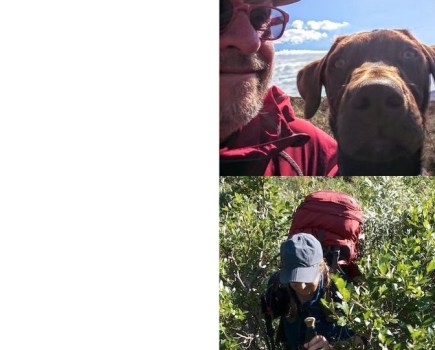
Geoff & Chrissie Crowther
Geoff and Chrissie Crowther are experienced backpackers with a background in wild international routes as well as plenty of walking at home in the UK. However, they don’t consider themselves hardcore adventurers. This year they completed a nine-day circuit from Kvikkjokk, including a quieter section of the Kungsleden trail. Read Geoff’s Sarek trip report, part one and part two. Read Chrissie’s Sarek trip report, part one and part two.

Mark Waring
You might recognise the name Mark Waring from his features in The Great Outdoors. The most experienced of our walkers when it comes to all things Scandinavia, Mark has completed scores of trips all over Norway, Sweden and Finland. Mark was the first foreigner to hike the 1,000-mile Gröna Bandet along the length of the Swedish mountains. Check out Mark’s Scandinavian trip reports at One Swedish Summer.
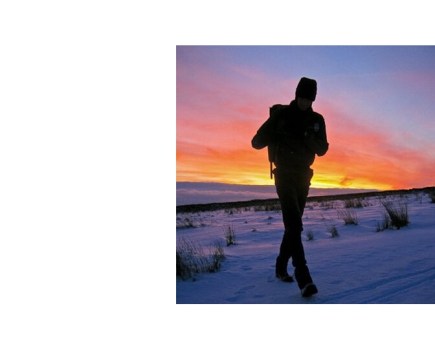
Colin Ibbotson
Colin Ibbotson is a hiking machine, veteran of some of the world’s greatest routes including the Pacific Crest and Continental Divide Trails. He first visited Scandinavia in 2014 for a 1,212km monster walk based on the Nordkalottleden (Arctic Trail). This year he attempted to hike Norway end to end, which he didn’t succeed in doing thanks to high snow levels and illness. Read Colin’s Nordkalottleden trip report here and here.
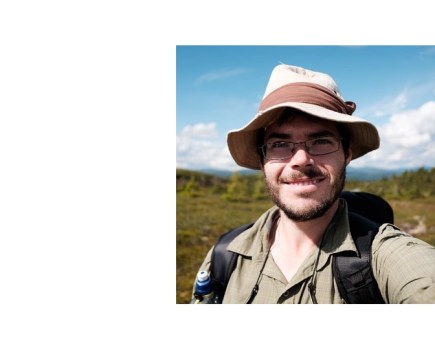
Alex Roddie
Finally there’s me. I’m a Scandinavian novice, having completed two trips to date: a backpacking tour of the Jotunheimen National Park, and a thru-hike of the 200-mile Jotunheimstien trail from Oslo to Gjendesheim.
What does Scandinavia offer that the UK doesn’t?
The first time I visited Norway, I was blown away by the sheer scale of the place. Jotunheimen reminded me of the Cairngorms, only with 2,000m summits, glaciers galore, and greater diversity of flora and fauna. Despite being a popular region with excellent trail and hut networks I saw few other people away from the busy Lake Gjende area.
It’s the unspoiled wilderness that attracts walkers from all over the world, although it’s still comparatively rare to meet a fellow Brit out in the fjells.
James: “You can walk for days without crossing a road. On my latest trip, the trail was little-trodden in the first part and difficult to follow – I didn’t see another hiker for the first five days!”
Peter: “The fact that it was in the Arctic Circle built up some trepidation before this trip, and fewer people made it much better too. Knowing that not many go here and that it’s Europe’s biggest wilderness was an attraction.”
Geoff & Chrissie: “There is something for everyone, be you mountaineer or trekker. Huts on some routes can allow for resupply. Language is hardly any barrier since most Scandinavians speak English.”
Mark: “This is a hugely extensive area which would take several lifetimes to cover. You can really ‘disappear’ into it if you wish and immerse yourself in a true wilderness.”
And is it true that Scandinavia is a bit like Scotland on steroids?
Colin: “It’s bigger, wilder, quieter, but with a similar feel to Scotland. If you enjoy hiking in Scotland it’s likely you’ll love Scandinavia – like taking the best of Scotland but spreading it over a larger area while being a lot less developed.”
James: “The scenery is similar to the Scottish Highlands but on a much bigger scale. When you compare a map of some wild places in Scandinavia to the UK you realise how small areas in the Highlands are.”
Mark: “They are after all part of the same Caledonian mountain chain, and you’ll delight in mountain words which have made their way into English (fjell meaning ‘fell’ or stjarn meaning ‘tarn’).”
A more diverse ecosystem with more impressive wildlife is another big plus point in Scandinavia’s favour. Many areas are heavily forested, and much of that forest is wilder than anything you’ll find in the UK. When hiking the Jotunheimstien this year I was enthralled by the fact that I was able to walk for days without leaving the woods. Seeing an elk on the path was an early highlight of the trail.
Colin: “You’ll find a wider variety of wildlife, including some big predators.”
Mark: “Scandinavia perhaps shows us what wildness we’ve lost in the UK – for example the presence of boreal animals such as lynx, bears or wolverines. It’s a reminder of what was or indeed what could become again.”
Favourite areas
There is a huge amount of variety in Norway, Sweden and Finland for the backpacker, whether you prefer lengthy forest hut-to-hut tours, high mountain wilderness routes, ski touring, or anything in between.
Many of the hikers we spoke to have walked bits of the famous trails such as the Kungsleden, or less well-known ones such as the Nordkalottleden and Gröna Bandet. Some areas are well served by a network of huts offering basic accommodation and food supplies.
James: “I feel that I am drawn to those places that are as remote as possible and get fewer visitors, perhaps with more understated scenery. As in the UK there are definitely honeypots such as along the Kungsleden. Wilderness areas such as Sarek are actually pretty well-trodden in places.”
Peter: “I wanted to get away from the main (Kungsleden) route as soon as possible, and I’m so glad we did – saw next to no-one those first four days. If I’m lucky enough to get back I’ll plan my own route again avoiding all the main trails.”
Geoff & Chrissie: “So far, our favourite area is the region south and east of Abisko. There is a wide variety of trails and routes giving access to a truly wild mountainous area. High passes and wide, dramatic valleys offer stunning vistas, superb camping and solitude.”
Mark: “I’ve got a taste for seldom-visited areas, and there are certainly plenty of those such as Skäckerfjällen, Blåfjellet or Indre Troms. I would caution, strongly, against anyone who has been once or twice to Scandinavia getting stuck in any one place. Embrace the breadth!”
Colin: “In my experience the best mountains are in Norway, Finland is much flatter and heavily forested and Sweden can be a mixture of the two. There’s something about hiking north of the Arctic Circle that appeals – 24 hours of summer daylight is something to be experienced (as are the ferocious mosquitos!)”
Challenges
There are challenges to overcome too. The mountains are often bigger and tougher than anything in the UK, with vast distances between them, and it’ll feel a lot more serious than most areas in Scotland. Bridges across watercourses are by no means guaranteed and severe weather can force you to change plans. In a landscape where the nearest road might be several very tough days’ walk in any direction, this places you under greater pressure to make wise decisions.
Mosquitos present the main wildlife-related challenge – they can be as bad as, or worse than, the Highland midge! Larger animals such as elks can be dangerous if provoked, but wolves and bears are rarely a problem. Rodents can sometimes chew through tents and stuffsacks in their search for food.
Finally, the summer hiking season is very short – perhaps only a few weeks in the northernmost areas. September is often regarded as a favourite season, with beautiful autumn colours, crisp temperatures, and the return of the aurora. However, there’s an increasing risk of fresh snowfall in most areas.
Peter: “I do think a lot won’t make the break (from the UK) sadly – too worried about the remoteness and the distance from home. Expense did add up a bit for this trip too.”
Geoff & Chrissie: “We went to Sarek this summer, and spent nine days wandering into the National Park before spending a couple of days accessing Sarek. But we were thwarted by poor weather and high water levels, so retraced our steps.”
Colin: “Summer arrived late (this year) and it was still full Arctic conditions in June up north. Then I got sick and was forced to abandon.”
James: “Although it’s a cheap place to get to, Scandinavia is expensive once there. You can’t afford too many post-backpack pints!”
Mark: “In August I had a long two-week hike through some very remote parts of Swedish and Norwegian Lapland. A great trip but it was a bad year for mosquitos and the distance was challenging.”
Of course, not all the challenges are practical ones…
Peter: “I should say my wife was – is – very unhappy I went leaving her with the dog, work, and the kids!”
The future
Industrial developments in the Scottish Highlands such as wind turbines and hill tracks, combined with the steady degradation of already severely depleted ecosystems, are undoubtably factors contributing to Scandinavia’s appeal. I asked our hikers if they thought more British backpackers would find their way to Norway, Sweden and Finland in future years if these trends continue.
James: “I now prefer to visit the Highlands on shorter more targeted trips so that I can avoid areas with too much development. I think from now on my big backpack of the year will be in Scandinavia.”
Peter: “I do think many will think about it. I’ve had many messages from followers, and I think blogs and videos will hopefully convince some to go, having already seen the terrain, read pros and cons from others, been able to ask questions.”
Geoff & Chrissie: “When folk like us venture above the Arctic Circle for backpacking, others are likely to see the accessibility of the Scandi wild country experience. We’ve enjoyed sharing our experiences via Twitter and our blogs and we know we have already inspired others.”
Mark: “I would urge not to see Scandinavia as simply a substitute for the Highlands. Take it as it is but go there with your hard-won experience from the UK hills and you’ll find that you can really fly!”
Colin: “Whatever your thoughts on the recent industrialisation of Scottish wild land it’s becoming increasingly difficult to find undeveloped areas to hike for extended periods. Due to the sheer size of Scandinavia, and with a relatively small population, it’s much easier to find areas suitable for long backpacking trips.”
I’ll leave you with this from Mark: “I first got hooked on a trip to the southern part of the Swedish mountains, Härjedalen. I was struck by the views from the summit of Storvigelen, deep forests to the south in Femundsmarka and the glaciated mountains of Jämtland glittering to the north. It all seemed so limitless, untouched and deeply compelling.”
Header image © Peter Dixon

